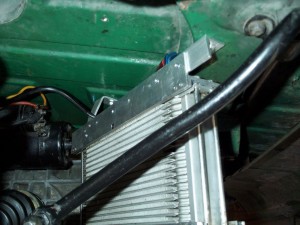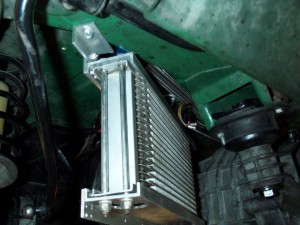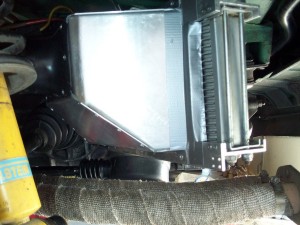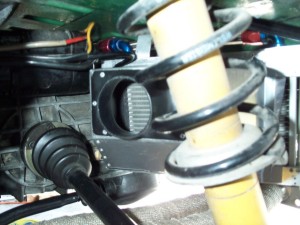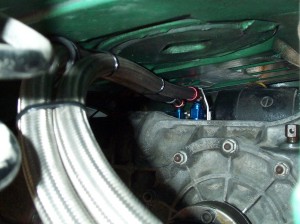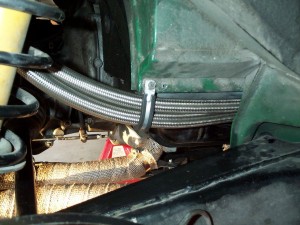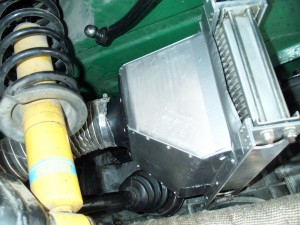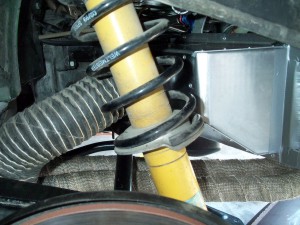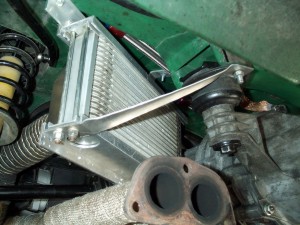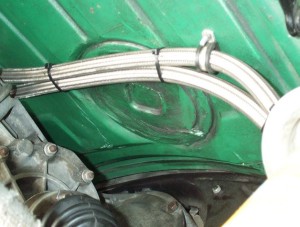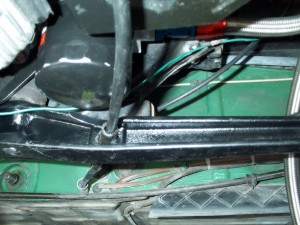| External Oil Cooler |
I had installed a simple external oil cooler years ago, but I was not happy with it for several reasons. First, there was no thermostat, so oil passed through the cooler
at all times and temperatures. This was not TOO much of a problem in Texas. Besides, I mostly drive the car in the warm times of the year. Next, I mounted the cooler upside down, that is, with the
fittings on the bottom. I did this because it was easier and it mounted higher with the fittings on the bottom. But theoretically, mounting it that way can cause an air bubble to form at the top and never
get oil to the entire cooler. SO I decided to revise the installation and solve these issues.
The cooler is an Earls 8" x 12" cooler, which I mounted by means of 2 Aluminum brackets. One bracket mounts the left side to the chassis just inboard of the rear sway bar clamp. It is attached to the top flange of the cooler
mount with two flat head screws and two Nylock nuts. This bracket is fabricated from a short piece of Aluminum angle (about 1.25" x 1.25" x .125"). I used flat head screws here because the shroud will mount on this face. The attachment to the chassis is via a big (about 5/16" dia) sheet metal screw, since it's a "blind" hole.
On the inboard end, I bent a piece of 1" x .125" aluminum into a funny shape to connect to the bottom of the trunk. I attached it in one of the many "low" spots, so that the screw head
would not be obvious. Again, I used two flat head screws to attach the bracket to the flange of the cooler mount. |


